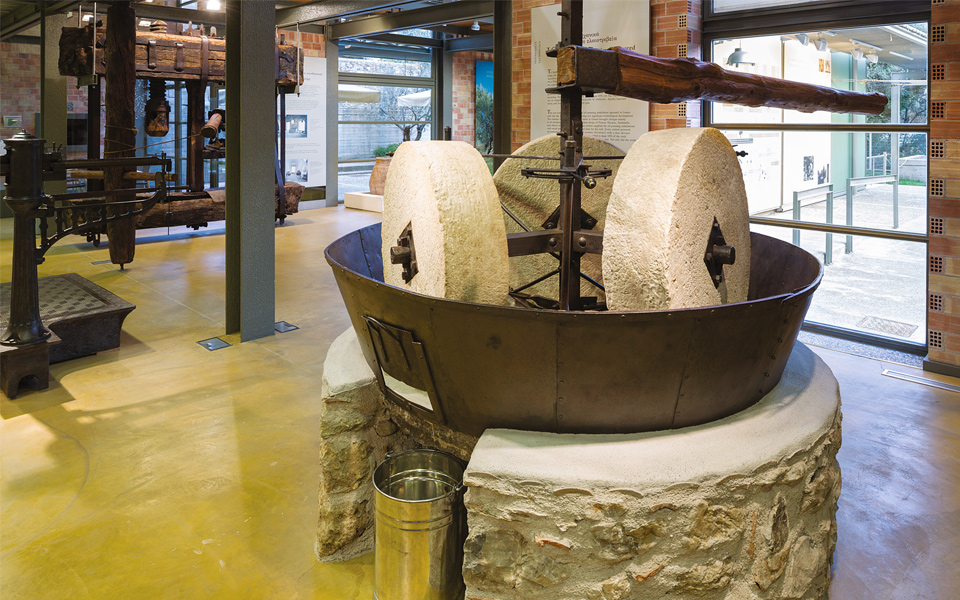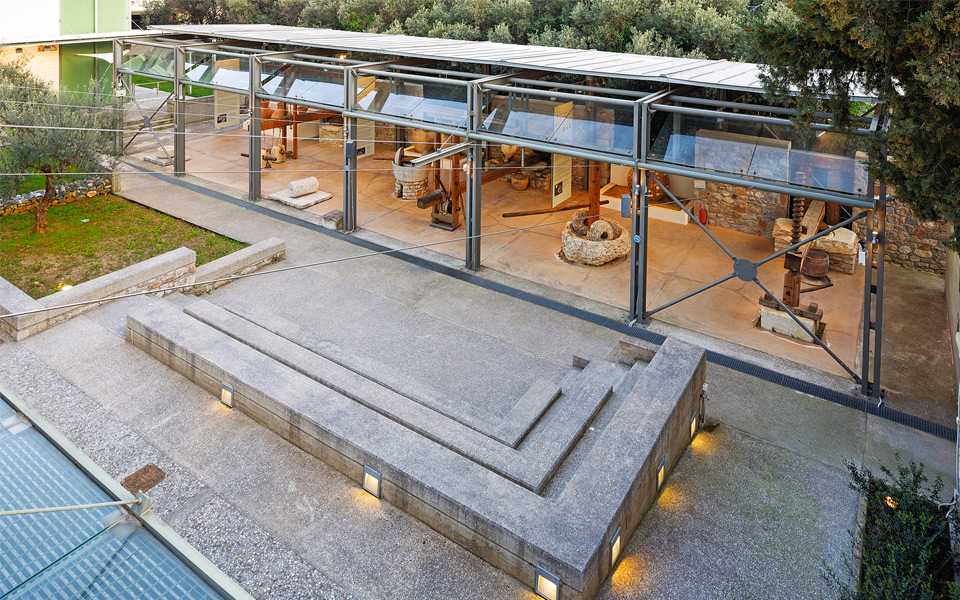A tour of the museum’s exhibition areas is tantamount to a journey through the culture, history and technology of the olive and olive-oil production in Greece, starting from prehistoric times. The museum’s chief aspiration is to shed light on the unbreakable bond between the olive, its precious oil and the identity of the region, from a number of different perspectives – economy, dietary and other uses, religious worship, art and technology. Here, one can learn about the millennia-old history of the olive and olive oil, and their multifaceted importance. In the outdoor exhibition area there are displays relating to olive cultivation and harvesting, as well as reconstructed olive presses from the prehistoric, Hellenistic and Byzantine era with demonstrations as part of educational programs.
On the ground floor, the focus is on the evolution of olive-oil production technology from the post-Byzantine era through the first part of the 20th century. Among the exhibits is equipment that has been rescued and/or restored, as well as large display panels that explain the traditional methods of olive-oil production.

© Nikos Daniilides– PIOP
Amongst the many exhibits not to be missed are the rare fossilized olive leaves, 50,000-60,000 years old, from the island of Santorini. Also fascinating are a number of Linear B tablets dating from the 14th century BC (exact replicas), which provide invaluable information about the history of the olive and olive oil.
At the end of your visit you can pick up information-packed leaflets and maps that will direct you to archaeological sites where olive oil was produced, as well as to traditional olive presses in the Peloponnese and the rest of Greece, enabling you to continue your journey along the intriguing paths of olive-oil production.
“A pioneer in its field, the Museum of the Olive and Greek Olive Oil in Sparta was the first of its kind in Greece, an undertaking made possible thanks to the Museum Network of the Piraeus Bank Group Cultural Foundation.”











